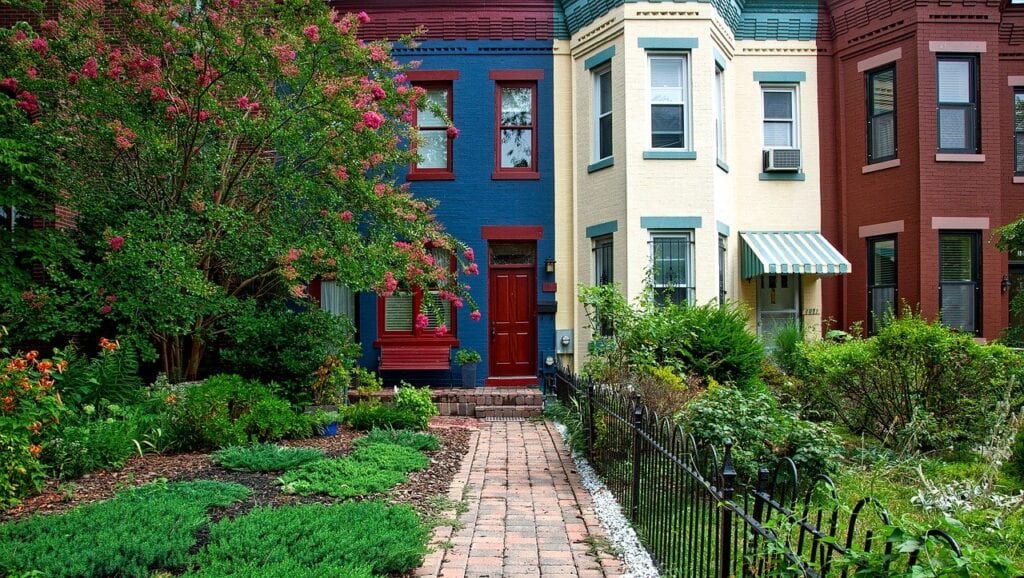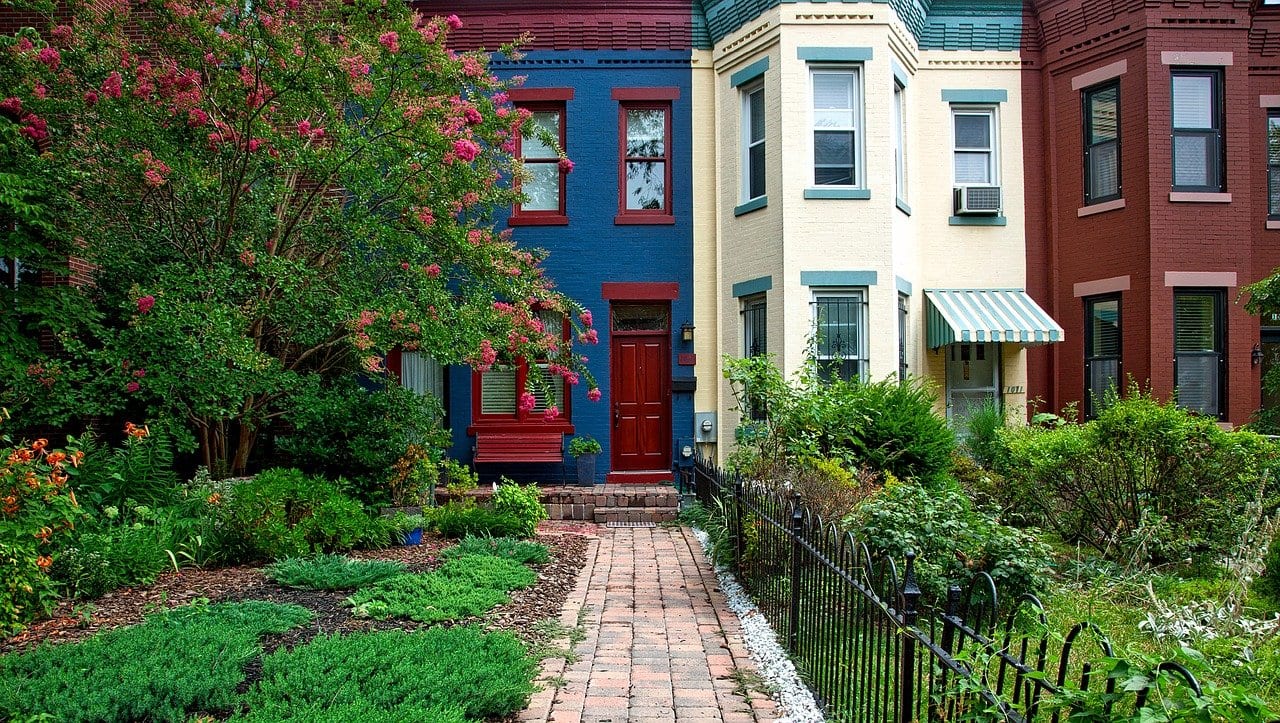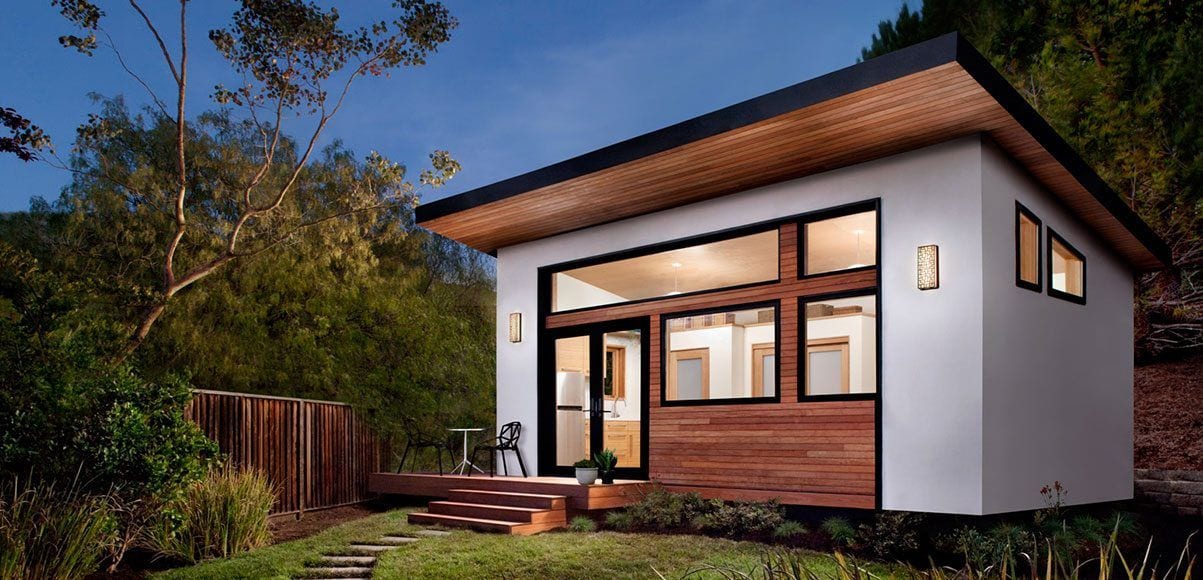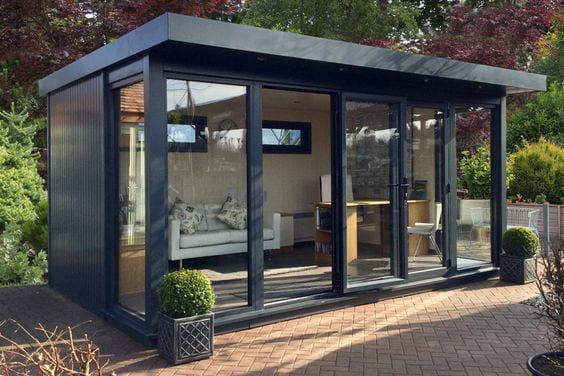Accessory dwelling units (ADUs) are popping up in the news a lot these days. When it comes to Accessory Dwelling Units Washington DC we’re experts you can count on. in With many of us spending more time around the house, there is an increased focus on how we are adapting our spaces to fit new lifestyles. For a growing number of people in the DC area, ADUs are a big part of the changes they are making at home.
We will get into in plenty of more detail about why ADUs are such a popular topic of late, but let’s start with some basic background information about the accessory dwelling unit in Washington DC. Although we will refer to them as accessory dwelling units or ADUs throughout this text, these secondary living units are known by several different names. In-law apartment, guest house, carriage house, casita, granny flat and backyard home are all popular labels, depending on where you are in the country. The name game is further complicated by the fact that some jurisdictions also use the acronym ADU to refer to Affordable Dwelling Units. This lack of a consistent naming convention often leaves accessory dwelling units underrepresented in national surveys.

In addition to a variety of names, an accessory dwelling unit in DC can take on several different forms. The most common units in the District tend to be basement apartments or in-law suites located below the large rowhomes that line the streets in historic neighborhoods like Georgetown, Dupont Circle or Capitol Hill. In areas with larger lot sizes, ADUs are often found above converted garages or in detached units in the backyard. Our firm specializes in these backyard versions, but for purposes of this conversation we will try to address all three styles of accessory dwelling unit in DC.
Regardless of the format, Accessory Dwelling Units Washington DC all have a similar set of characteristics that define them as ADUs and common rules that govern their use. These shared themes vary slightly based on the specific requirements of individual municipalities, but they tend to show up repeatedly in one form or another. For example, an accessory dwelling unit in Washington DC will have a separate entrance from the primary residence. It will contain a living and sleeping area and they will have a full kitchen and bathroom. Many jurisdictions have regulations governing the size and positioning of an accessory dwelling unit, as well as the number of people who can occupy the structure and how much off-street parking should be required.
We will explore these regulations in more detail in our discussion about local zoning, but it is important to understand the balance that local governments are trying to strike between residents who want to preserve what they see as the character of their single-family residential neighborhoods and the government’s need to provide an array of housing options for a growing population. The conversation between the competing interests has been very active in many jurisdictions of late and has led to changes in the regulations governing an accessory dwelling unit in Washington DC and surrounding areas. Alexandria City, Fairfax County and Prince George’s County are all in various stages of reexamining how they treat accessory dwelling units, while ADUs can already be constructed “by right” in the District, Montgomery County and Arlington County.
The following sections will provide more detail about the uses and regulations related to Washington DC accessory dwelling units. We will address the costs and benefits associated with constructing an ADU as well as the municipal requirements, how they vary, and what alternatives are available to homeowners.
Local Zoning Requirements For Accessory Dwelling Units Washington DC
When we talk about the standards that govern construction in this country, we are really talking about two separate sets of guidelines: building codes and zoning codes. Building codes are largely uniform across different jurisdictions and set the standards for how things are constructed. Zoning codes, by contrast, are the rules that dictate the type, density, location, size and use of a particular property. These rules can vary greatly from county to county and they will be the primary focus in our discussion of the regulations governing an accessory dwelling unit in Washington DC.
Building an ADU is a lot like building a house in terms of the regulations and standards that need to be met for construction. This is especially true for detached units that will be subject to strict local guidelines around size and location, as well as provisions that may examine the potential impacts on issues like parking and stormwater runoff in the surrounding area. Some homeowners are surprised to find out just how much work is involved in getting an ADU approved, even in areas where they are accepted as part of the zoning code. The process of building an accessory dwelling unit in DC is a lot more complicated than simply picking out something you like online and having it delivered to your backyard.
Physical Requirements
The first determination most homeowners need to make when deciding to build an accessory dwelling unit is whether their property can legally support such a structure. Many municipalities restrict ADUs to certain residential zones. Fairfax and Montgomery Counties, for example, only allow accessory dwelling units to be paired with single family-detached units. This restriction applies to both attached and detached ADUs in the county and effectively bars accessory units from duplexes and attached forms of single-family housing. Building an accessory dwelling unit in DC historic districts requires a special review process, even though ADUs in the rest of the District are approved “by right”.
Once the residential zone has been identified and the associated requirements are met, the next step for most homeowners is to figure out if they have enough land to support an accessory dwelling unit. In almost all cases, detached ADUs are restricted to the backyard and therefore many of the requirements are based on the amount of space available behind or on the sides of the primary residence. Once again, the regulations can vary dramatically from county to county.
A detached accessory dwelling unit in Washington DC requires a 20’ to 25’ deep rear yard, while in Arlington and Montgomery Counties the backyard size limits range from 6,000 to 20,000 square feet. Fairfax County is a bit of an outlier in this category as well in that it requires a minimum of 2 acres before allowing a detached ADU on a property. Although the land area requirement is more applicable to detached units, attached ADUs that involve an addition to the primary residence may also have to take lot size into account.
The final major physical consideration for most homeowners seeking to build an accessory dwelling unit in DC is the size of the unit itself. Most jurisdictions in the region limit the footprint of a detached ADU based on the size of the primary residence, the area of the rear yard or some combination of the two and an overall maximum size. For example, the District limits detached accessory dwelling units to the greater of 30% of the required rear yard or 450 square feet. Montgomery County takes the lower of 50% of the primary dwelling footprint, 10% of the lot area or 1,200 square feet, while Arlington draws a fixed maximum size of 560 or 650 square feet, depending on zone. In addition to size restrictions on Washington DC accessory dwelling units, many areas also limit the number of ADUs that can be built to a single detached unit.
The physical requirements for an accessory dwelling unit in DC also extend to certain individual components of the unit. As we mentioned earlier, one of the defining characteristics of an ADU is that they require a separate entrance from the primary residence. Washington DC accessory dwelling units also need to include a full kitchen and bathroom to be considered an ADU. For attached units, especially basement apartments, there are additional regulations governing internal stairways that connect the ADU to the primary residence.
While accessory dwelling units in DC are guided by several different local zoning ordinances, there are alternative options for homeowners who are looking for extra space at home but who don’t need a full ADU. For those seeking a home office or a studio space in a detached accessory structure, without the need for some of the elements that would qualify the unit as an ADU, the regulatory environment is significantly less stringent. These types of structures are often governed by a different set of rules and can be constructed in many parts of the region that do not currently allow Accessory Dwelling Units Washington DC. A local ADU company in DC can help guide you through the distinctions within these sets of regulations.
Use Requirements for Accessory Dwelling Units in Washington DC
Beyond the physical characteristics that define Washington DC accessory dwelling units, there are a set of allowable uses that are also regulated by local governments. These rules spell out how an ADU can be used, as well as who can use them. As with the physical requirements, the limits on use are intended to minimize the impact on nearby residents, while promoting certain benefits for the greater population of the jurisdiction.
A good example of this is the way many local governments regulate the rental behavior of an accessory dwelling unit in DC. Municipalities promote ADUs as affordable housing options within a region where rising home values and rental rates are pricing many families out of their neighborhoods. Cities see ADUs as a way for middle class homeowners to gain additional rental income that will allow them to stay in their neighborhood or purchase a home they otherwise could not afford. From the rental perspective, local governments believe ADUs can provide affordable, long-term rental options for couples and small families.
Municipalities are embracing these benefits of Accessory Dwelling Units Washington DC, while trying to regulate against potential abuses that could adversely affect other homeowners in the area. Governments are doing this, in many areas, by limiting how ADUs can be rented. Washington DC accessory dwelling units can be rented to long-term tenants, who typically remain in the unit for 12 months or more. However, many local jurisdictions do not allow ADUs to be used for the type of short-term rentals popularized on Airbnb or VRBO. They also discourage the practice of absentee landlords by requiring that the homeowner live in either the primary residence or in the accessory unit. These types of use requirements limit the income potential for investors, while preserving additional housing options for local governments.
One of the more aggressive use requirements in the region exists in Fairfax County. The county’s current guidelines prohibit Accessory Dwelling Units Washington DC unless they are used to house residents who are over the age of 55 or have a disability. The county obviously wants to provide options for residents who wish to age-in-place or care for a relative in need, however, the regulations are proving to be too restrictive as the county faces a worsening housing crisis. Fairfax is currently re-examining its use requirements for ADUs and is expected to pass less stringent guidelines in the near future.
Accessory Dwelling Unit DC Benefits
As we alluded to in the previous section, there are significant benefits associated with owning an accessory dwelling unit in Washington DC. From a public perspective, ADUs diversify the housing options available to a growing population throughout the region and they can make homeownership more affordable by allowing owners to offset their rising costs with passive rental income. This potential rental income also attracts investors, who may push for higher returns by marketing their ADUs as short-term Airbnb rentals, where local zoning codes allow such a step.
Aside from the alure of potential rental income, accessory dwelling units in DC can satisfy many homeowners needs, especially as people spend more time in and around their homes. ADUs can be used as a personal guest room to house an older relative or a child back from college. In addition to a living quarter, an accessory dwelling unit in DC can serve as a private, quiet space in a house that may otherwise be overwhelmed with activity. ADUs can serve as a home office, yoga studio or a home classroom for the kids. These units are the true swiss army knife of home additions because of their ability to be used in so many different capacities.
In additional to their versatility, Washington DC accessory dwelling units are easily adapted to meet a homeowner’s changing needs over time. A space that starts off as a home office could be converted into an au pair suite and then into an in-law suite as new priorities emerge around the home. ADUs also provide homeowners the ability to age-in-place and downsize into their own backyard after their children have left the house. Many families in this scenario will move into the accessory dwelling unit and rent out their primary residence for additional income as they near retirement.
Finally, although it is not a primary reason for building an accessory dwelling unit in Washington DC, ADUs do contribute to an increase in property value over time. It does not make financial sense, in most instances, to add an ADU strictly for the potential resale value. As we will explore in the next section, accessory dwelling units in DC are not inexpensive and the upfront costs required for construction are typically not offset by an equal increase in home value.
That said, when you add an ADU to your home you are adding finished space and amenities that will increase the value of your property. Most homeowners will consider accessory dwelling units if they have an immediate need for the additional space and will think of the increased property value as an added benefit over time. If you have additional questions about any of the benefits of accessory units, you should reach out to an ADU company in DC that can walk you through the details.
Accessory Dwelling Unit DC Costs
While the benefits to building an accessory dwelling unit are many, these projects do come with financial and personal costs. ADUs are not inexpensive in construct. The online advertisements for complete prefabricated units or tiny homes on wheels that simply roll into your backyard and are ready to be used should not be taken at face value. There are often hidden costs to legally install these units on a residential lot in the region and, in many places, they may not be permitted at all.
That leaves homeowners with two main options if they want to build an accessory dwelling unit in DC: stick-built or modular construction. We won’t get into too much detail about the advantages and disadvantages of each method in this article, but generally speaking modular construction is more affordable and requires less disruption on-site, while stick-built units can have a greater degree of customization and can better match the look and feel of the primary residence. Both construction techniques are established methods for building an accessory dwelling unit in DC and both are used widely throughout the region.
Stick-built ADU projects often start with an architect or design-build firm that will work with the homeowner to design their unit and oversee the construction process. These projects typically involve the owner coordinating with several different parties throughout the process, often signing separate contracts for the design and construction elements. The cost for this level of service varies greatly depending on size of the unit, quality of the build-out and the condition of the site, but many Washington DC accessory dwelling units that are stick-built range in price from $200,000 to more than $400,000.
Modular ADUs tend to be less expensive than their stick-built counterparts. These units are designed and built in a controlled factory environment and delivered to the site to be assembled. The manufacturing process tends to produce a lower cost, higher quality unit, however the trade-off is that the project management role in these cases often falls to the homeowner. Essentially, in exchange for a lower price, homeowners are taking on adding work and responsibility. The result is a project that can typically be completed for between $150,000 and $200,000, but those costs do not account for an owner’s time and effort.
The potential investment of personal time in these projects can be significant and should be a major consideration when deciding how to move forward with your ADU. Depending on your location, the regulatory approval process can take several months, as the project plans are reviewed by zoning officials, public hearings are scheduled, and the proper permits are issued. During this period, homeowners may be required to answer questions about the proposed design, adjust plans to meet zoning requirements and attend meetings to secure approvals. As we indicated at the beginning of this article, building an ADU is a lot like building a house. The regulatory process, even in areas that are seemingly welcoming of ADUs, can be complicated and require a significant investment of time.
This leads us, naturally, to the question of whether it is worth it to build an accessory dwelling unit in Washington DC. The simple, and probably frustrating, answer is that it depends on your individual circumstances. If you have a need for additional space and privacy, especially one that requires you to care for a relative for an extended period, then an ADU is an excellent option. If you are in an area that allows you to rent out an accessory dwelling unit for additional income, then an ADU could be a viable option to help offset rising costs at home. You can get an estimate by contacting us.
Generally, the longer that you plan to own your home the more sense it makes to consider building an accessory dwelling unit in DC. Even if the upfront costs of construction are not offset by an equal increase in your home value, the longer you use the ADU the more value it can bring to your family. If you choose to rent out your unit, the rental income, combined with the increase in property value, could be more than enough to justify the upfront expense of construction. Overall, the increasingly favorable regulatory environment and the flexible nature of accessory units are likely to make ADUs a popular option for homeowners in the coming years.




